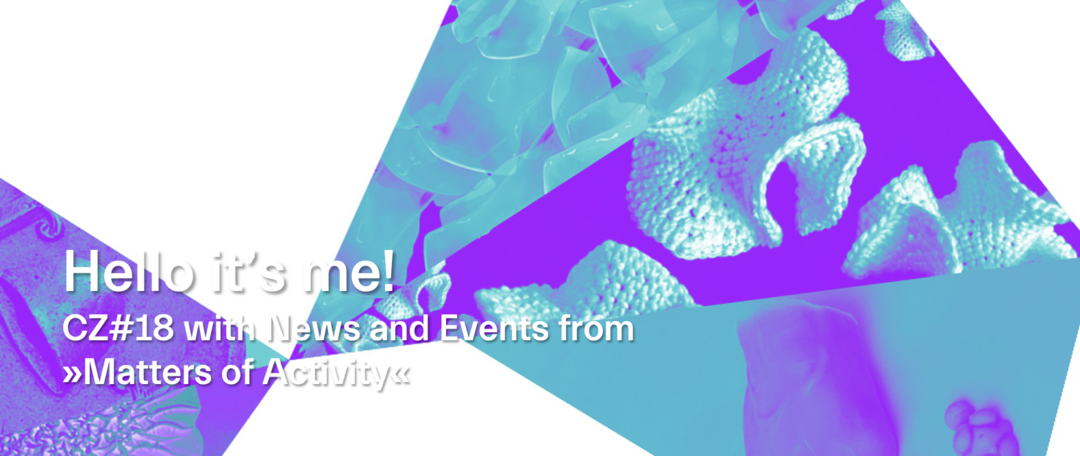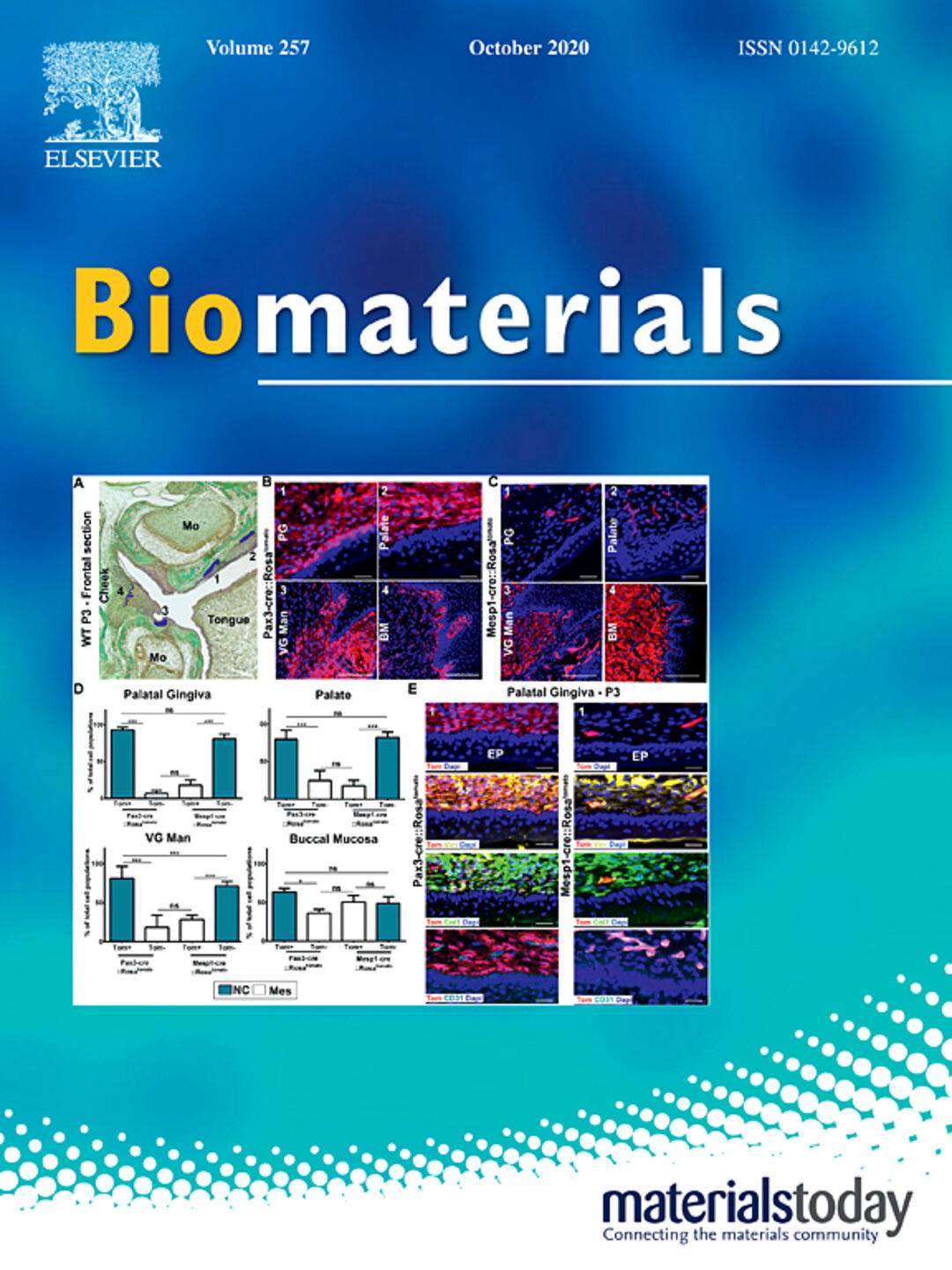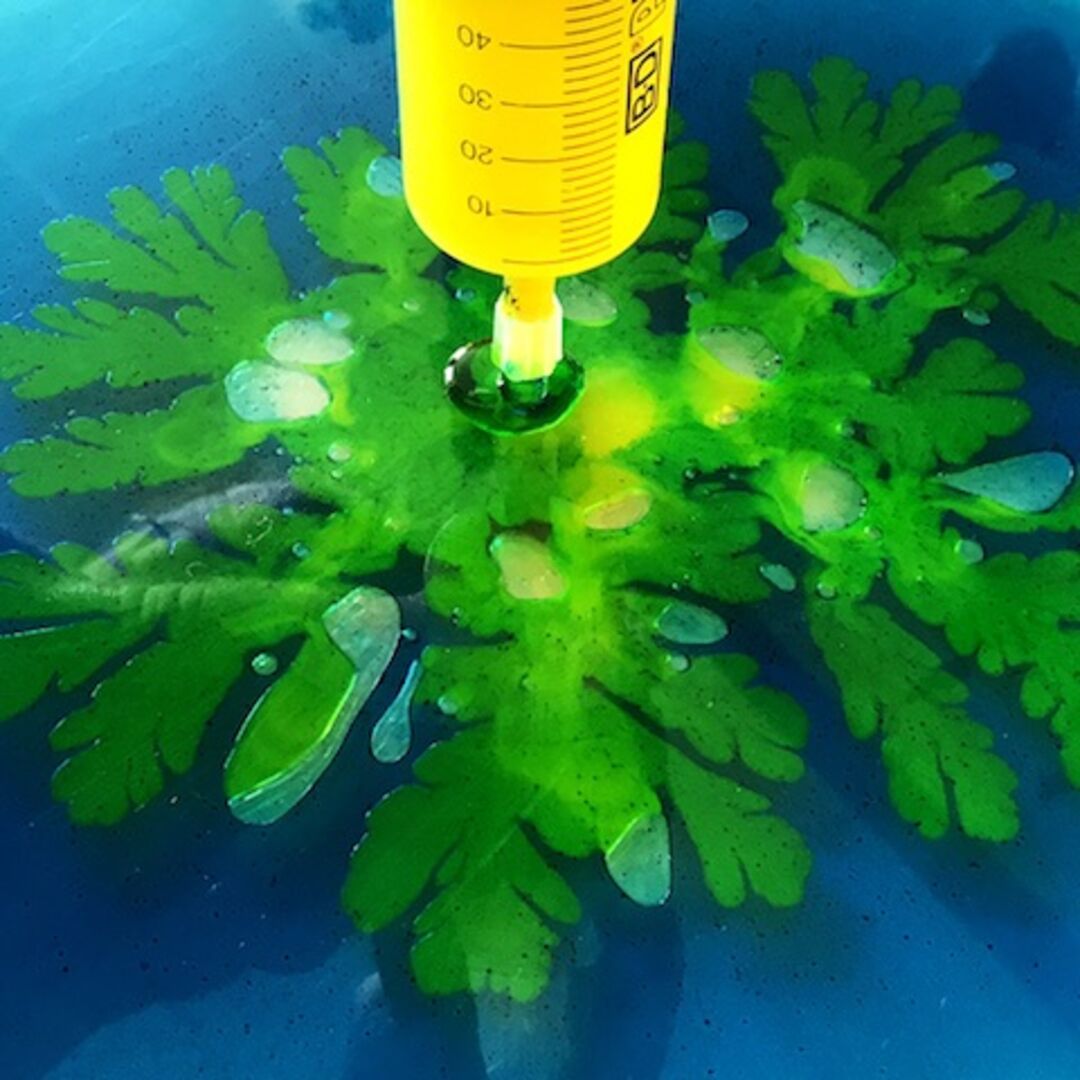|
|
 |
 |
|
|

|
 |
»The Analog in the Digital Age« Key Visual MoA Annual Conference, 11 November 2020.
From Left to Right: Medallion commemorating Lorenzo de’ Medici: Felt hat and two daggers, after 1537. Copyright: Arthor’s Archive; E. Coli Colony Biofilm. Copyright: Michelle Mantel for »Matters of Activity«; Bacterial Curtain. Copyright: Bastian Beyer and Iva Rešetar; Crochet Model of a Hyperbolic Plains. Copyright: Regine Hengge; Wax Mulages. Copyright: Michelle Mantel for »Matters of Activity«.
|
|
Editorial Dear friends of »Matters of Activity«,
Welcome back after the summer break! We hope you enjoyed the summertime and some relaxing days, especially after this demanding first half of the year. We're kicking off the second half with lots of exciting online events and many calls we invite you to apply for.
We are very much looking forward to the rest of 2020, especially to our first Annual Conference, which will take place in an experimental virtual format this year.
Happy reading, stay healthy and take care
Antje Nestler, Eva Schmidt and Franziska Wegener
|
 |
|
Liebe Freund*innen von »Matters of Activity«,
willkommen zurück nach der Sommerpause! Wir hoffen, ihr konntet die Sommerzeit und einige erholsame Tage genießen, besonders nach einer anstrengenden ersten Jahreshälfte. Nun starten wir mit vielen spannenden Online-Veranstaltungen und spannenden Calls in den zweiten Teil des Jahres.
Wir freuen uns sehr auf den Rest des Jahres 2020, insbesondere auf unsere erste Jahreskonferenz, die dieses Jahr in einem experimentellen, virtuellen Format stattfinden wird.
Viel Spaß beim Lesen, bleibt gesund und passt auf euch auf!
Antje Nestler, Eva Schmidt und Franziska Wegener
|
 |
|
|
|
|
 |
| The Human Liver Matrisome |
| Journal »Biomaterials« Accepted Paper by A. Daneshgar, O. Klein, G. Nebrich, M. Weinhart, P. Tang, A. Arnold, I. Ullah, J. Pohl, S. Moosburner, N. Raschzok, B. Strücker, M. Bahra, J. Pratschke, I.M. Sauer, and K.H. Hillebrandt |
 |
|
|

|
 |
Biomaterials, Vol. 257, October 2020. Copyright: Elsevier
|
|
1.10.2020
|
 |
|
Material Form Function | Cutting | Publications Together with their colleagues, Cluster members Johann Pratschke, Igor Sauer and Marie Weinhart published the paper »The human liver matrisome. Proteomic analysis of native and fibrotic human liver extracellular matrices for organ engineering approaches« in the international and highly ranked journal »Biomaterials«.
→ more
|
 |
|
|
|
|
 |
| Call for Applications: Martin Buber Society of Fellows |
| Last Opportunity: Extended Deadline for Applications for 2021-2022 15 September 2020 |
 |
|
Call Each year the Academic Committee of the Martin Buber Society of Fellows selects up to ten exceptionally gifted young scholars (up to five from Israel and five from Germany). They aim at fostering interdisciplinary academic discourse at the highest level among outstanding young scholars (post-doctoral). Candidates who have completed their PhD at an Israeli or German university, as well as citizens of Israel or Germany who have received their PhD in any country, are eligible to apply. Application is open for those specializing in all fields of the Humanities and the Social Sciences. Fellows receive a monthly stipend of approximately 9000 NIS.
Please find more details about the application and requirements ↗ here.
|
 |
|
|
|
|
 |
| Opportunities for Young Researchers: Network with Research in the USA |
| Application for PhD Scholarship till 1 October 2020 |
 |
|
Call Fulbright Germany supports young German researchers who are conducting a four to six-month research project at a U.S. university or academic institution that is directly related to their previously commenced academic dissertation. Funding will be provided for projects that begin between May 1st and October 31st, 2021.
The fellowship finances maintenance costs of 1.600€/month, transatlantic travel and health/accident insurance. The Fulbright J-1 visa is free of charge, and a flat rate of 300€ is paid for other incidental expenses.
If you are interested, please find more information on their ↗ website.
|
 |
|
|
|
|
 |
| Coworking Materials. Für einen aktiven Materialismus |
| Joint Conference of the International Research Center for Cultural Studies, University of Art and Design Linz and »Matters of Activity« |
 |
|
|

|
 |
Conference »Coworking Materials«: Sophia Höretzeder, Chemical Aesthetics, 2020. Sophia Höretzeder is a B.A. graduate of Fashion & Technology Studies at Kunstuniversität Linz. Copyright: Sophia Höretzeder, Kunstuniversität Linz
|
|
8.10.2020–9.10.2020
|
 |
|
Material Form Function | Symbolic Material | Object Space Agency | Science Communication In Design, Cultural and Natural Sciences, an anti-Cartesian turn has manifested itself in recent years, which denies the separation into active ›res cogitans‹ and passive ›res extensa‹ and understands the material world as (co)acting. The conference from October 8th–9th deals with the aesthetic and political consequences of this turn, in design practices and thought processes. The conference will be held in German, including many Cluster members.
→ more
|
 |
|
In Gestaltung, Kultur- und Naturwissenschaften manifestiert sich in den letzten Jahren eine anticartesianische Wendung, die die Trennung in aktive ›res cogitans‹ und passive ›res extensa‹ bestreitet und die materielle Welt als (mit)handelnd begreift. Die Tagung am 8.–9. Oktober, an der einige Clustermitglieder teilnehmen, beschäftigt sich mit ästhetischen und politischen Konsequenzen dieser Wende, in Gestaltungspraxen und Denkprozessen.
|
 |
|
|
|
|
|